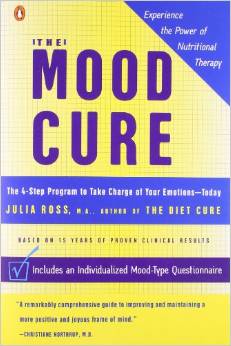We interviewed Robert Silvetz MD about transcranial magnetic stimulation (TMS) for symptoms of autism, anxiety, depression and other chronic health conditions.
Transcranial magnetic stimulation is a noninvasive treatment method that can normalize neural activity. It has been successfully used for at least two decades to improve symptoms of:
- Autism
- Traumatic Brain Injury (TBI)
- Post-Traumatic Stress Disorder (PTSD)
- Poor executive functioning
- Poor language skills
- Compulsive behaviors
- Anxiety
- Depression
- Substance abuse
- “Chemo brain”
- Dementia
- Insomnia
- Schizophrenia
- Diminished emotional awareness
- Other psychiatric and neurological disorders
In this webinar, Dr. Silvetz answered the following questions about TMS:
- What is transcranial magnetic stimulation?
- Are there any studies supporting its use?
- How long has it been in use?
- Is it similar to neurofeedback?
Please note that you will be asked to enter your email address at the 30-minute mark to finish viewing the video.
About Robert Silvetz MD
Dr. Silvetz’s interest in Individualized Transcranial Magnetic Stimulation is a natural outgrowth of his long interest and accomplished career in both technology and healthcare.
Graduating from Boston University in 1989 with a Doctor of Medicine degree and a BA in both Computer Science and Medical Sciences, he spent the next several years developing and implementing medical software for large healthcare systems.
In 2012, he became the Chief Science Officer and Physician Liaison at Newport Brain Research Laboratory, where individualized Transcranial Magnetic Stimulation was first shown to effectively treat symptoms related to autism, stroke PTSD, depressions, anxiety, and stroke-induced dementia.

At the Brain Treatment Center, Dr. Silvetz provided Practice of Medicine support to six client clinics worldwide and provided research and development directly to the protocol in mathematics and thermodynamics.
Returning to the Washington, DC area in 2016, Dr. Silvetz and his wife, Lorraine Silvetz, and partners, launched iSynchrony Clinics, where he is Director.
Disclaimer
This webinar is not a substitute for medical advice, treatment, diagnosis, or consultation with a medical professional. It is intended for general informational purposes only and should not be relied on to make determinations related to treatment of a medical condition. Epidemic Answers has not verified and does not guaranty the accuracy of the information provided in this webinar.
Still Looking for Answers?
Visit the Epidemic Answers Practitioner Directory to find a practitioner near you.
Join us inside our online membership community for parents, Healing Together, where you’ll find even more healing resources, expert guidance, and a community to support you every step of your child’s healing journey.
Sources & References
Amatachaya, A., et al. The short-term effects of transcranial direct current stimulation on electroencephalography in children with autism: a randomized crossover controlled trial. Behav Neurol. 2015;2015:928631.
Bersani, F.S., et al. Deep transcranial magnetic stimulation as a treatment for psychiatric disorders: a comprehensive review. Eur Psychiatry. 2013 Jan;28(1):30-9.
Corthout, E., Barker, A. & Cowey, A. Transcranial magnetic stimulation. Exp Brain Res (2001) 141: 128.
Enticott, P.G., et al. A double-blind, randomized trial of deep repetitive transcranial magnetic stimulation (rTMS) for autism spectrum disorder. Brain Stimul. 2014 Mar-Apr;7(2):206-11.
Gomez, L., et al. Non-Invasive Brain Stimulation for Children with Autism Spectrum Disorders: A Short-Term Outcome Study. Behav Sci (Basel). 2017 Sep 17;7(3).
Gorelick, D.A., et al. Transcranial magnetic stimulation in the treatment of substance addiction. Ann N Y Acad Sci. 2014 Oct;1327:79-93.
Leung, A., et al. rTMS for suppressing neuropathic pain: a meta-analysis. J Pain. 2009 Dec;10(12):1205-16.
Lisanby, S.H. and Belmaker, R.H. Animal models of the mechanisms of action of repetitive transcranial magnetic stimulation (RTMS): comparisons with electroconvulsive shock (ECS). Depress Anxiety. 2000;12(3):178-87.
Narayana, S., et al. Clinical Applications of Transcranial Magnetic Stimulation in Pediatric Neurology. J Child Neurol. 2015 Aug;30(9):1111-24.
Oberman, L.M., et al. Transcranial magnetic stimulation in autism spectrum disorder: Challenges, promise, and roadmap for future research. Autism Res. 2016 Feb;9(2):184-203.
Optiz, A., et al. How the brain tissue shapes the electric field induced by transcranial magnetic stimulation. Neuroimage. 2011 Oct 1;58(3):849-59.



